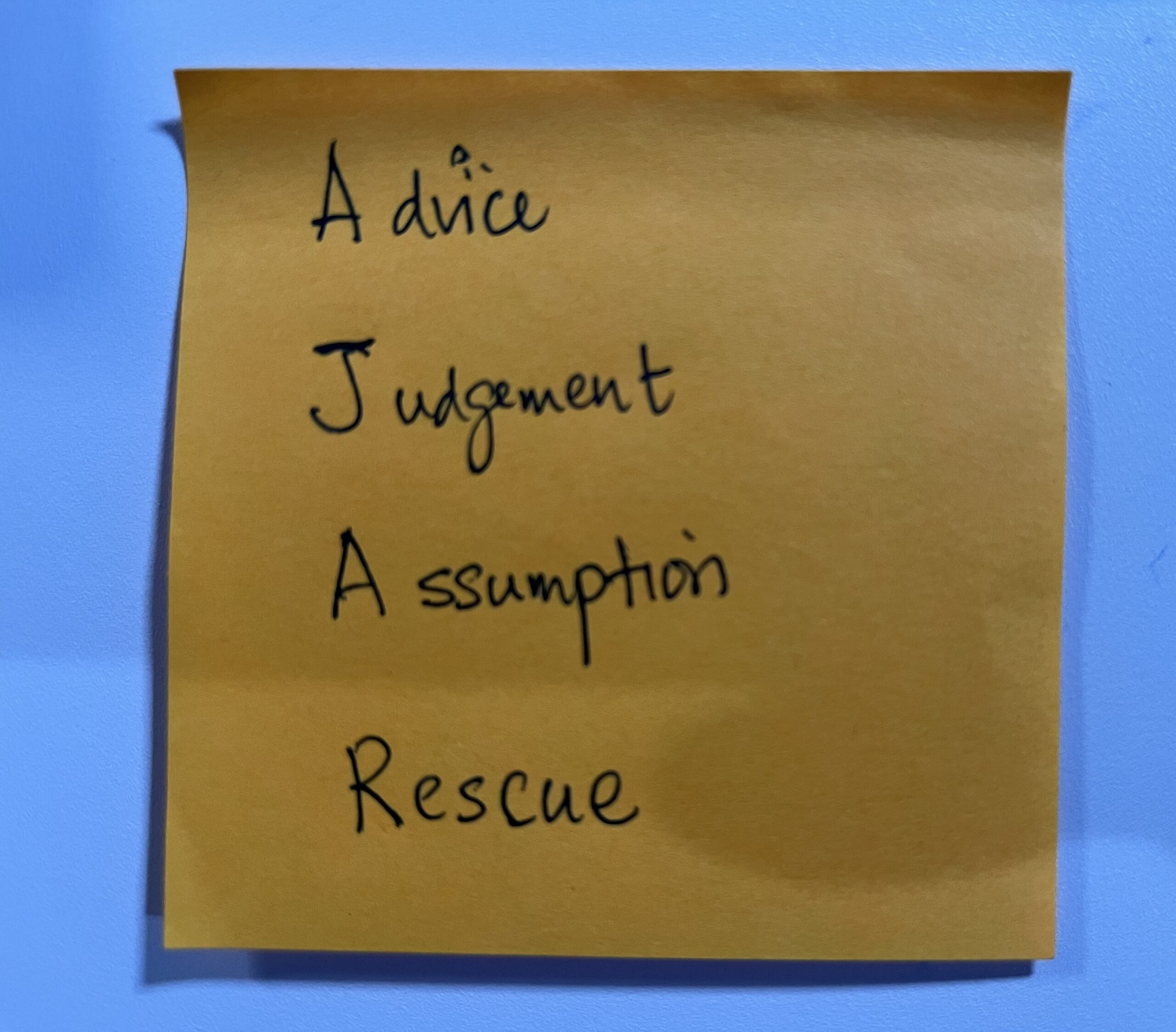Public Speaking with Confidence
9 July 2021
One common topic, when I work with leaders, is the area of public speaking. Common challenges in public speaking are “managing anxieties” and “mind going blank” when in front of an audience. So here are some tips to handle these potential situations.
Anxieties – Even experienced speakers experience anxieties. The difference is that they know how to manage it. Anxieties arises when there is the factor of “unknown”. These emotions are a result of a mix of confidence and courage when faced with uncertainties. Confidence is the degree of certainty one has about a situation. The more we practice public speaking, the more confident we get because our brain becomes familiar with those kind of situations. We also feel more confident when we speak on subjects that are close to our hearts and when we have done sufficient preparation.
Courage on the other hand is a human trait that we draw on to help us act in the face of uncertainties. It is the ability to take action despite fear. In the absence of confidence, we need the courage to take the first step. These first steps will eventually give us the experience needed to raise our confidence.
So, how do one find courage? The answer is to search for a compelling reason for doing it. Search for your “WHY”. Some questions that you can ask yourself are, “Why is getting good in public speaking important for me?” What’s in it for me if I’m good in this?” “What might be the consequences if I don’t invest time and effort in this area?” Having a strong purpose and meaning in doing something will give us the strength and courage to experiement.
Sources of anxieties – The emotion of anxiety is useful if we can manage it well. The stress hormones generated in our body can give us that extra push to perform at a higher level, if it is under control. If not, fear can set in and it can be stifling. We generally feel anxious when we are unsure of the outcome and when we feel that we are being judged.
Managing anxieties – The trick to managing our anxieties in public presentation or in any other situations in life, is to play some mind games. This mind game is called re-framing. Re-framing is about seeing the same situation in a positive and more empowering manner. It is about giving the same situation a different meaning that will help you focus on the positives. It is about choosing to see the head side of the coin instead of the tail. So, here are some re-framing techniques.
“They want me to succeed” – As an audience, have you felt uncomfortable when you see a nervous presenter? I bet if you have a magic wand, you would take it out to calm the presenter because you want the person to succeed. Yes, 99% of any audience wants us to succeed. So you already have positive energies to start with.
“It is about them, not me“ – When we focus our attention on ourselves, we will feel we are being evaluated and negative self-talk creeps in. So one trick is to divert your attention from self to audience by engaging the audience as quickly as you can. Ask them to do something, think of something or get feedback from them. Ask them a question or get them to do an exercise. In this way, you divert the energy to the audience and you will have some time to re-compose.
“It is a conversation” – When we re-frame a presentation into a conversation, it takes away the feeling that you have to speak all that time. This re-frame takes some pressure away. A conversation is two way. A presentation is one way. Whether you are dealing with an audience of 10 or 100, see yourself having a conversation with them. Get them to respond occasionally, pause for questions or ask for comments. In dealing with larger audience, if you don’t expect a response, you will not feel disappointed or embarrassed. Ask a question, pause (for possible responses) and then answer the question. This technique will give you a breather to re-focus your thoughts.
“It is not a performance” – In a performance such as singing or stage acting, the focus is on you. It is about how well you carry a note or how realistic you are in your acting. There is a benchmark and a certain level of expectations from the audience. Don’t see public speaking as a performance because it is not (unless you are in competition). There are no benchmarks except for the level of confidence that you exude. Whatever contents that you deliver, is just your opinion supported by some evidence that you produce. So just be yourself and you will be fine.
Create a metaphor – People play mind games, all the time to feel confident. They create pictures of themselves or use metaphors in their mind to boost their courage and confidence. One client chose to see herself as an eagle soaring above the audience, totally in control and totally safe. So what might be a metaphor that you can create in your mind to give you that confidence and courage?
“My opinion matters“ – When you are asked to present, know that your opinion, experience and knowledge on the subject is important to the audience. If the audience walk away with just one thing they learned from your presentation, you have succeeded. Sometimes we feel that we are “nobody” in comparison to the wisdom and experience of the audience. Know that each of us is unique and in our uniqueness, there is always some perspectives that others can appreciate about.
Value the experience – What ever the outcome of your public speaking stint may be, value the experience. If it turns out to be better than what you had expected, celebrate! If it turns out the other way, learn from it. All effective presenters have failed many times before becoming good at it and they learn from each experience.
Move your energy – When anxiety builds up while waiting for your turn to speak; move, don’t sit. Stand up and walk around. Take a few deep breadths and slowly exhale. Breathing out three times slower than you breathe in. Focus on one thought that empower you; be it a picture or a short phrase.
So, now that we have some techniques to manage our anxieties, let’s look at finding a way to remember what we want to say.
Content Delivery – There is nothing worse than standing in front of an audience, with a “million eyes” looking at you and you have nothing to say, “mind gone blank”. Pretty frightening right?
Leverage on Frameworks – Frameworks provide us with a structure to deliver our contents. Just like building a house, once you have the key structures in place, all you need is to fill it up with bricks. There are many frameworks you can leverage on. Here are three that can guide your content delivery:
What-Why-How: What is it that you want to share? Why is that important to the audience? How can someone start doing that. Example: What is coaching? Why is coaching important? How can one start to practice coaching?
Situation-Solution-Benefits: What is the problem or situation that we are facing? What solutions am I proposing? What are the benefits of that approach. Example: The situation is that the competition in our industry is very keen. I’m suggesting that we consider doing X and Y as a solution. The benefits of adopting this approach are…
Problem-Cause-Solution: What is the problem that we are facing? What are some causes of this problem.? What solutions that we can adopt? Example: Production downtime is causing our company opportunity loss amounting to $X annually. Here are the top three reasons for it. The way forward is to do X, Y, Z.
Have a framework in your mind when you present, fill it up with what you want to say and your flow will make sense.
Understanding Brain-Science – It is useful to understand how our brain gets activated when faced with uncertainty. Over our human evolution, our brain has been conditioned to look for danger and pitfalls. We tend to focus on what can go wrong and how that might affects us. So we basically live part of lives in the future, imagining the worse case scenario. This creates anxieties. When we feel anxious, our brain secretes cortisol (stress hormone) and adrenalin (fight-flight hormone) and these chemicals reduces our thinking capacity. So instead of thinking of potential failures and worst case scenarios, re-focus your brain to imagine a successful outcome. See in your mind an image of success; see yourself standing in front of a supportive and encouraging audience. Do an imaginary presentation in your mind to prepare it for the real situation.
So, have fun experimenting with some of these mind games. I’m curious, what are some techniques that you have used to manage your own anxieties?















